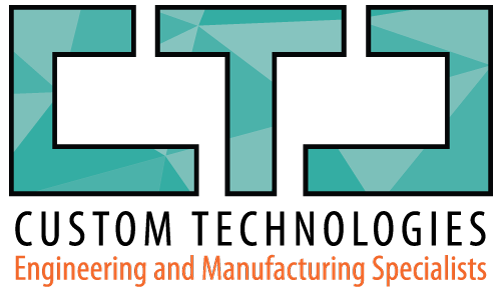When defining stack-up tolerance, the word “tolerance” refers to how much inaccuracy one is able to tolerate in a given dimension. Imagine that you want to cover a 4-foot by 6-foot floor with 12-inch square tiles. You’d think about buying 24 tiles so that everything fits perfectly, right? Not necessarily! It’s possible that after measuring the individual tiles you find out that they are really 12.25 inches. Now instead of four tiles being 48 inches total, they really take up 49 inches of space. And the other direction in the room is longer so the six tiles are 73.5 inches long, not 72.
This is what we mean about tolerances stacking up. In this scenario, each individual tile is accurate in measurement to within 1/4 inch of what the manufacturer claimed. Apparently, their manufacturing tolerance was 1/4 of an inch from their stated size. That doesn’t sound too bad individually, but when you put multiple parts together, the tolerances “stack up” and the overall inaccuracy for the entire assembly increases.
Stack-Up Tolerance Leads to Problematic Manufacturing
This can be a huge problem in manufacturing. If some parts actually run on the “big side” from what was planned, and if others run on the “small side,” the issues here can stack up even more absurdly. For example, think about designing a block with a hole in it that can fit a rod securely. Let’s say that the hole in the block is going to be 2 inches in diameter. So far, so good, but manufacturing processes aren’t perfect.
You actually have to tell the manufacturer how close to the stated dimension is good enough. That’s the tolerance. Think of it like, “How much error can I tolerate, and still be okay?” For the rod-in-the-hole example, you might say that you want the hole to be 2 inches, within maybe 1/4 of an inch of tolerance. That means the manufacturer knows they are allowed to make the hole anywhere from 1 and 3/4 inches in diameter on the small side, up to 2 and 1/4 inches on the big side.
Multiple Tolerances are Required
Next, think about the rod that must fit inside the hole “securely.” Is it okay to use the same tolerances? No way! If you do, you might get a finished product with a rod that is 2 and 1/4 inches in size and a hole that is only 1 and 3/4 inches. The rod won’t fit in the hole and the stack-up of the two tolerances has caused gigantic problems.
Sounds like you’d better go back to the drawing board.
Tightening the Tolerances
What if you stay on the safe side instead and say that the hole must be a little bigger? You decide to go with a hole of 2 and 1/8 inches, and tighten the allowed tolerance down to plus or minus 1/8 of an inch. Next, say that the rod must be a little smaller like 1 and 7/8 inches with a tolerance of plus or minus 1/8 of an inch as well. The planning is now in place so that the rod can never be bigger than 2 inches and the hole can never be smaller than 2 inches. That sounds better, right?
Worst case scenario, on the tight side they barely fit together. On the loose side, there could still be as much as a 1/2-inch gap (if the rod is at its smallest and the hole at its largest). Simply put, a 1/2 inch between the rod and hole is still a lot of distance after you’ve tweaked them so that each is only plus or minus 1/8 inches individually. Again, this is what we mean when we say the tolerance stacks up.
Considering Accuracy for Design
With all of these details, you can see that it quickly becomes a surprisingly complex engineering task to look at each of the individual dimensions of the individual parts in a multi-part assembly. This also includes making sure that the tolerancing is properly designed between them. In the last example above, most assuredly, adjustments would need to be made. Otherwise, if each part is released for individual production without considering how accurate they each need to be to the intended design, you may have some unpleasant surprises on your hands when you try to put them all together.
3D Printing and Stack-Up Tolerance
While 3D printing on your own may seem like the most efficient way to rapid prototype individual components, it’s important to know that it just doesn’t address stack-up tolerance. While you can tell an engineer to “make it more precise” or “stay within my stated tolerance on each critical dimension,” that’s not how printers function.
Custom Technologies’ Solution
In order to properly produce a product’s components, Custom Technologies analyzes each individual part, assigns proper tolerancing, and then produces the parts using precision machining methods. This allows our machinist to individually adjust each critical dimension until it’s just right. Using precision machining, we are able to stay within the stated tolerance levels we assign. A fully functional product can then, and only then, be assembled.
Whether you’re on the prototype stage, ready to launch, or somewhere in between, Custom Technologies can work with you to make the entire process a cinch. Our expertise includes design, CAD modeling, prototyping, molding, laser cutting, and much more.
Contact us today or visit customtechnologies.com.


